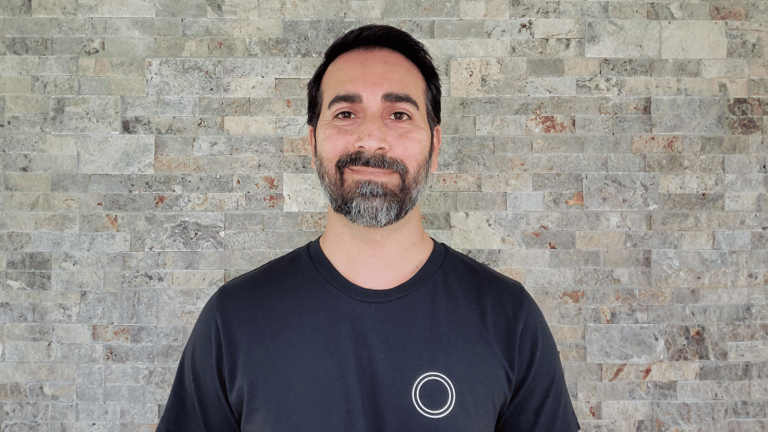
When it comes to investing, risk is always a factor. Are you aggressive, conservative, or not quite sure where you fall in the spectrum?
Here are four things to consider when trying to figure out how risky you want to be:
1. Risk tolerance
2. Time horizon
3. Investment objective
4. Liquidity needs
As an investor, there’s a major difference between putting money into a simple savings account at the bank and purchasing shares of a hot new tech IPO. With a savings account, there’s minimal risk. The account typically doesn’t gain much interest, but there is not as much worry about losing money in this scenario either.
Now with an aggressive stock, like a new tech IPO, there is a lot more risk associated with it. This means that the stock can have large upside potential, but there is also a chance you could lose your principal investment.
The riskier the investment, the greater the volatility. So, how risk tolerant is your investment strategy?
A good way to visualize (and get comfortable with risk) is to set a scale from 1 to 10, where 1 has the least amount of risk and 10 has the most risk. Using the example above, we can place the savings account as a 1. For this exercise, let’s place the aggressive stock at a 10. So as you climb up higher on the scale, your risk and the potential reward go up as well.
Figure out where you’re comfortable on that scale and invest accordingly. You might think that you’re an 8 or a 9, only to realize that you can’t stomach the ups and downs of your investment.
Another crucial component to figuring out how much risk you’re willing to take is calculating your time horizon.
How do you figure out your time horizon?
When contemplating how risky you want to be with your investments, how long you want to invest plays a key role. There's a major difference between investing for the short-term, like 3 years, as opposed to the long-term of 30 years.
It's important to associate your investments or accounts towards a specific goal. For example, if you are saving towards a down payment on your first house which is five years out, you may not want to be as aggressive with these funds. Five years is a short-term goal and you may not want to run the risk of putting your funds into a volatile investment that could potentially lose a big chunk of your down payment. In this scenario, it would be prudent to invest in a manner that you're comfortable with given the shorter time horizon.
On the flip side, let's say you are a young investor saving towards retirement which is roughly 30 years away. You've opened up an IRA, Roth IRA or possibly saving in your company's 401k plan. These types of accounts are earmarked towards long-term goals like retirement, which means you can take advantage of compounding interest.
What exactly does compound interest mean?
Compound interest is the interest based on your initial investment plus the accumulated interest since you started your investment. Basically, you are earning interest on your interest. So when time is on your side, there is also the opportunity to possibly take on more risk.
Once you figure out your time horizon, it's easier to know how much risk you should take with a particular investment or account.
Now that I’ve covered risk tolerance and time horizon, let’s move on to setting your investment objective and understanding what role it plays when figuring out how much risk to take.
What is your investment objective?
An investment objective is simply figuring out what your desired outcome or goal is when investing. Your investment objective can vary and will typically fall in one of the following five categories:
1. Capital Preservation.
This is the least riskiest option, and is meant for the most conservative investors that are looking for minimal risk when it comes to losing their money. As I mentioned earlier, this usually results in lower potential income and overall return on your investment. Items such as bank savings accounts and money markets would fall in this category. This works for short-term financial goals or an emergency fund.
2. Conservative.
This option is meant for investors that still prefer taking on less risk but are open to having some growth on their money. In this category, you might see an account with a mix of mostly bonds and maybe a small allocation to stocks.
3. Growth with Income.
As the middle of the road option, this option is for investors looking for modest growth with the focus on generating income as well. At this point on the risk spectrum, you might see an account with an even mix of stocks and bonds. This is a pretty balanced approach which can help with market volatility. This category can be useful for those mid-term financial goals that are five to ten years out.
4. Growth.
In this category, there is usually very little focus on generating any income since the primary goal is to achieve high long-term growth on your money. The typical mix would be mostly stocks and maybe a small allocation to bonds.
5. Aggressive Growth.
At the other end of the risk spectrum is Aggressive Growth. Here the emphasis is on maximum capital appreciation. This objective has a very high level of risk and is best suited for investors with a longer time horizon. Here you might see a portfolio made up completely of stocks. This may be appropriate for long-term goals that are twenty years out.
Your investment objective plays a key role in assessing your risk tolerance. Having a financial goal when investing will act as a roadmap for your decisions and help you navigate the path that's right for you.
The last component to figuring out how much risk you should take when investing is knowing your liquidity needs.
What are your liquidity needs?
Simply put, the term “liquidity needs” refers to when you’ll need access to your money. Depending on the financial goal you are saving towards, you will need access to your funds at different points.
For example, for a short-term goal, you may need your money in 3 years. But for a long-term goal of 20 years, you have more time before you’ll need access to your funds. Requiring access or "liquidity" to your money should play a key role in how risky you want to invest.
Whether you are saving for an emergency fund, a major family vacation, a special anniversary celebration, or another short-term goal, it's important to keep in mind that we can't predict the ups and downs of the stock market. The last thing you want is to have an emergency, need access to the money, and realize that a hefty portion of your initial investment is gone. It’s a better idea to be more conservative with this type of investment, since your runway is short.
Now, if you aren't anticipating the need to make withdrawals any time soon, then you can be more confident in taking on more risk in your portfolio. For example, if you don't plan on making withdrawals from your retirement account for the next 20 years or you have an investment account that you plan on leaving to the next generation, you can afford to take on more risk.
As time progresses, your liquidity needs will also change. As your long-term goals morph into short-term goals, it’s a good idea to reassess the risk in your portfolio. It could be the right opportunity to possibly switch to some investments that are producing the income you might need access to sooner.
At the end of the day, there is no exact answer to “how much risk should I take when investing” -- the right formula is a mix of tolerance, time horizon, investment objectives, and liquidity needs. By taking these four components into consideration, you’ll be equipped to assess the right level of risk that is right for you to meet your financial goals.
About Learn
Financial advice for real people, by real people. You shouldn't need a degree to understand your money. Join Head of Education, Brittney Castro and Altruist mentors as they break down financial tips and strategies in a real way to help you finally understand how to achieve your financial goals faster.
Have a question you want to see answered? Ask it here. 🙋♀️

